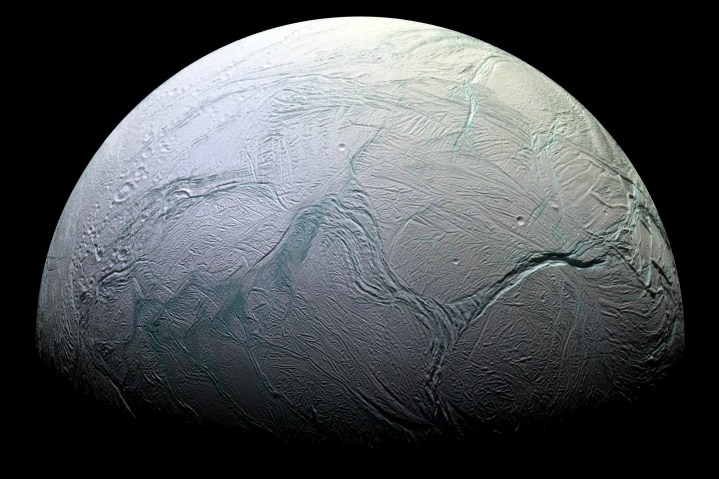One of the prime places that scientists are interested in looking for life in our solar system is Saturn’s icy moon Enceladus. The moon has an ocean of liquid water beneath a thick, icy crust that could potentially support life. Interest in this subsurface ocean was heightened when the Cassini mission was studying Enceladus in the 2000s and flew through plumes of water spraying from the surface,
Now, the James Webb Space Telescope has been used to observe these plumes all the way from Earth, helping scientists to learn about the water system on this moon. The plumes come from Enceladus’s south pole, and Webb was able to spot them even though the entire moon is just over 300 miles across. Despite that small size, the plume Webb observed spanned more than 6,000 miles.

“When I was looking at the data, at first, I was thinking I had to be wrong. It was just so shocking to detect a water plume more than 20 times the size of the moon,” said lead author of the research, Geronimo Villanueva of NASA’s Goddard Space Flight Center, in a statement. “The water plume extends far beyond its release region at the southern pole.”
As well as being long, the plume was also throwing up water at a fast rate, with vapor gushing away from the surface at a rate of nearly 80 gallons per second — which, NASA points out, could fill an Olympic-sized swimming pool in a couple of hours.
This amount of water is affecting the environment around Saturn, as the moon is leaving a trail of water as it orbits. “The orbit of Enceladus around Saturn is relatively quick, just 33 hours. As it whips around Saturn, the moon and its jets are basically spitting off water, leaving a halo, almost like a donut, in its wake,” said Villanueva. “In the Webb observations, not only was the plume huge, but there was just water absolutely everywhere.”

The researchers used Webb’s NIRCam (Near-Infrared Camera) instrument to take pictures of the plume, and also its NIRSpec (Near-Infrared Spectrograph) instrument to identify the water coming from and surrounding the moon.
“Right now, Webb provides a unique way to directly measure how water evolves and changes over time across Enceladus’ immense plume, and as we see here, we will even make new discoveries and learn more about the composition of the underlying ocean,” said co-author Stefanie Milam of NASA Goddard. “Because of Webb’s wavelength coverage and sensitivity, and what we’ve learned from previous missions, we have an entire new window of opportunity in front of us.”
The research is available as a pre-print and will soon be published in the journal Nature Astronomy.
Editors' Recommendations
- Well-known star turns out to be not one star, but twins
- James Webb telescope peers at the atmosphere of a rocky hell world
- James Webb captures the edge of the beautiful Horsehead Nebula
- The expansion rate of the universe still has scientists baffled
- See what James Webb and Hubble are observing right now with this tool



